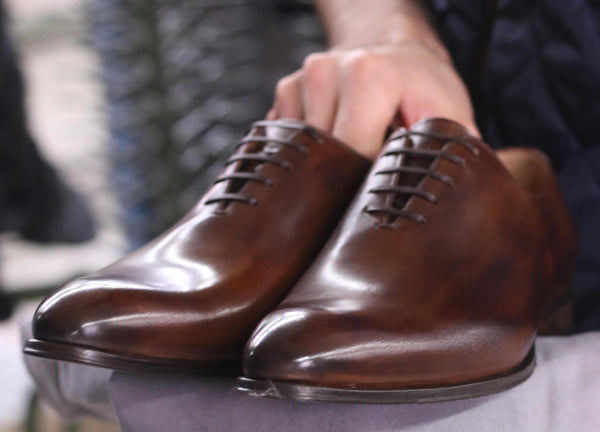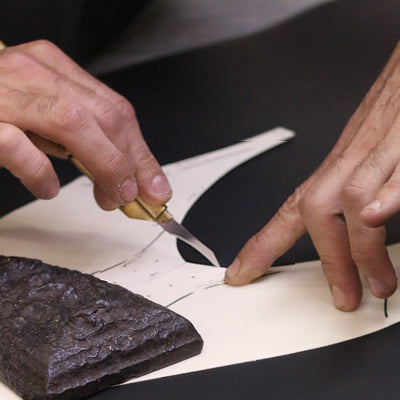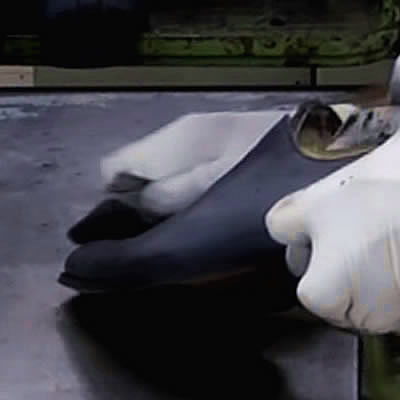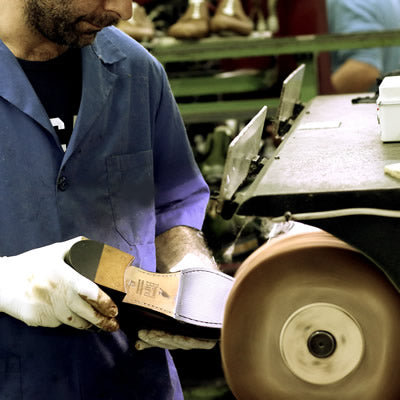-
10,000+ Orders Shipped | ★★★★★ 4000+ Reviews
-
Free Shipping & Exchanges | Worldwide
-
Quality, Style & Comfort | Made In Italy

It takes up to 30 steps and about 5 weeks to make each pair of Thomas Birds. Some of the main steps are summarised here, and can be seen in the video below.
Each style has its own pattern, which determines the individual pieces of leather that make up the shoe. There may be several pieces in say a wingcap brogue or just one larger one in a wholecut. These individual pieces are cut from a large hide of calf leather. This is done by a 'clicker' who places a rigid template on the leather and cuts round it with a sharp knife. The term clicker originated in Northamptonshire as the knife makes a clicking sound as it goes around the edges of template.

The clicker first examines the hide carefully to determine the best place to cut, so blemishes are avoided and the leather will be suitable for the next stages in the process.
The pieces of leather then go to the flat stitching area to be machined, depending on the style, for example to add holes for broguing, or to thin the edges, a process called skiiving. They are then stitched together to form the shoes 'upper', and it begins to take its shape. This area of the factory is traditionally called the closing room.

The shape and fit of the shoe is determined by the 'last' which is a 3 dimensional shape, one for each size. The stitched upper is pulled tight over the last to form the recognisable shape of the shoe. Sometimes the leather has to be worked further by hand, with a special hammer, particularly on wholecuts to make the shape and finish perfect.
Dyes are then added by hand in stages to build up the desired colour. This forms the basis of the patina of the shoe. Polishes are added by hand to add further depth to the colour and protect the finish.

The sole is then stitched onto the upper using a process called blake stitching. This is the preferred way to attach soles to quality shoes in Italy. A blake stitched is relatively flexible and can be cut close to the shoe which looks neat. And the sole can be easily replaced by a local cobbler when worn. More dye and polish may be added before the shoes get a final polishing and are boxed ready for delivery.
